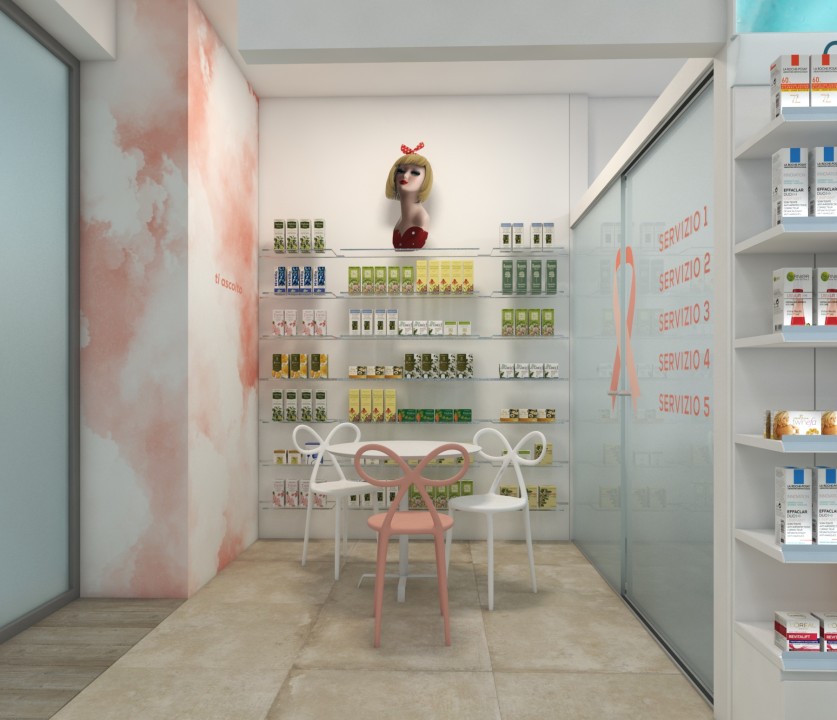
20 Mar The importance to create ONCOLOGY Pharmacies on behalf of communities
In recent years, cancer has become a leading cause of death worldwide.
The incidence of cancer is increasing, and it is estimated that by 2030, there will be 21.7 million new cases of cancer each year. As a result, the role of oncology pharmacy has become increasingly important in the management of cancer patients.
An oncology pharmacy is a specialized pharmacy providing pharmaceutical care to cancer patients. It is responsible for the preparation, dispensing, and management of chemotherapy medications, as well as the provision of supportive care for cancer patients. The design of an oncology pharmacy is critical to guarantee its functionality and effectiveness.
First and foremost, the design of an oncology pharmacy should be
PATIENT-CENTERED.
This means that the physical environment of the pharmacy should be designed to optimize the patient experience. For example, the layout of the pharmacy should be easy to go through, with clear signage and logical flow pathways. Waiting areas should be comfortable and welcoming, with access to beverage and reading materials.
In addition to the patient experience, the design of an oncology pharmacy should prioritize patient safety. This includes the safe handling and preparation of chemotherapy medications, as well as the prevention of medication errors. The pharmacy should have adequate space for the preparation and storage of chemotherapy drugs, with proper ventilation and protective equipment to minimize exposure to hazardous drugs.
Furthermore, the design of an oncology pharmacy should facilitate efficient and effective communication between healthcare providers. The pharmacy should be located in close proximity to the oncology clinic, with direct access to the electronic medical record system. This allows for timely and accurate medication orders and ensures that the pharmacist is fully integrated into the healthcare team.
Finally, the design of an oncology pharmacy should be adaptable to changing needs and technologies. As new drugs and treatment modalities become available, the pharmacy should have the infrastructure to accommodate these changes. This includes the ability to upgrade technology, add new equipment, and modify workflow processes as needed.

As far as I am concerned, when I approach the Design of an ONCOLOGICAL PHARMACY there are #4 areas to consider:
1) Specialized products to insert in the front-end
2) Special Treatments
3) The Listen approach
4) Events

1) SPECIALIZED PRODUCTS
The category study is very relevant together with the right layout, macro-categories could be for example:
COSMETICS
– Dermatology (face, body)
– Scars
MAKEUP
– Corrective Make-up
-Magnetic eyelashes
– Nail polish (no semi-permanent no cuticle remover)
HYGIENE
– Dental (special mouth gels)
– Underwear
HAIR
-Items for hair (fixing powders in the event there is fluff in the hair)
– Wigs (i.e. insert the possibility of rental and collection of them)
-Turbans, scarves and hats
PREVENTION
-Genotest (to tell you if you are genetically inclined to have cancer)
OTC
-Microbiome (i.e. for stomach problems)
HOMEOPATHY
and all the categories that use herbal/natural remedies
It’s very important to focus in brand that have the right products, for exampIe I collaborated with Martha Care (www.martha-care.com).

2) THE ONCO SPA
TREATMENT ROOM must meet the following requirements and many more:
– Special A/C that filters all particles for allergies and microbes;
– no perfumes or essential oils;
– positive mirror for re-education of one’s image;
– cots with pillows to help patients;
– beautician wearing gloves and mask;
– you cannot use machinery but only gentle manual manipulations, the beautician must have attended a course in oncological cosmetics;
– include physiotherapist for rehabilitation;
– include image consultancy treatments: armochromy and specialized hairdresser teaching how to put on scarves and turbans
– include corrective make-up treatments
The goal is to accompany the patient throughout the process which is obviously personal. Support him for his physical and psychological well-being.

3) LISTEN rooms
tailor-made spaces where you can listen and train.
The room will not have a desk but rather two sofas and a water dispenser or fountain, eventually a semi-top for support. The interview usually lasts for one hour. During this time the calendar and subsequent meeting plan is established.
Everything is based on this keyword: SPIKES is the 6-step protocol acronym to help the patients:
- S – setting (therefore the welcoming physical place to talk, create privacy, create the connection)
- P – perception (the perception to understand how much the patient knows)
- I – invitation (the invitation, understand how much he wants to know)
- K – Knowledge (knowledge but without technical terms, use simple words and explain how to get better)
- E – Emotion (emotion, creating empathy and knowing how to respond to the emotions that the patient transmits)
- S – Solution (the solution by creating a strategy together after checking if the patient and family are ready)
To include meeting with psychologist and all the specialist that can support the patient and their personal pathway.
Creating and designing the right spaces is not easy and must be done by those who are experts in doing it, there are many things to consider that must be integrated. The design is unique and becomes the tool by which you can really influence people’s mood. We need to create positive and protective spaces, intimate but not inclusive. Natural materials that give serenity and a capable and not shouted communication that supports the work of oncological pharmacists.
4) EVENTS
Events are very important, they can be private or public:
Private (in privacy rooms):
– self-examination;
– prevention;
Public (inside the pharmacy or if it’s possible in the exterior space of the pharmacy, in gardens… I recommend you this book to learn more: “Therapeutic Gardens- Designing for healing spaces by Daniel Winterbottom/Amy Wagenfeld)
The possibility of using the physical interior /exterior space of the pharmacy even during closing hours for themed and educational meetings. Remember that Prevention can be taught from an early age.
In conclusion, the design of an oncological pharmacy is critical to its functionality and effectiveness. By prioritizing patient-centered care, patient safety, communication, and adaptability, an oncology pharmacy can provide optimal care to cancer patients. Since the incidence of cancer continues to rise, the importance of oncology pharmacy in the management of cancer patients becomes crucial.
Did you ever think of transforming your Pharmacy into an Onco-Pharmacy? or do you have a specialty Pharmacy?
Do you want to know how?
We can help. We are Pharmacy experts.
Contact us: https://www.sartorettoverna.com/contact-us
